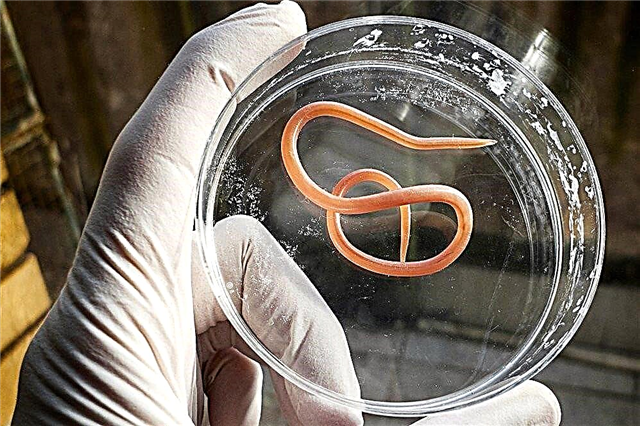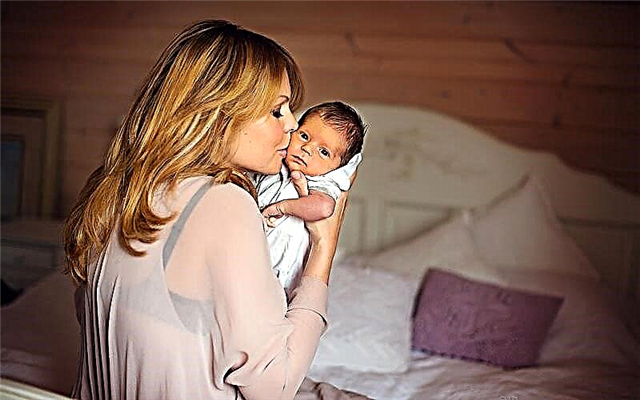
Pavel Tyulenev's methodology is one of the most extraordinary discoveries in pedagogy of the last century. The author believes that by following it, parents will be able to maximize the potential of the child. Adults need to provide conditions for the functioning of the "genius gene", which, according to Pavel Tyulenev, absolutely all children have.

He assumes that with the help of his method of development of children, the baby will already at an early age be able to do and know what children in preschool age will not be able to do. And by the age of 18, the child will be able to get a higher education and not even one. Let's take a closer look at what this technique is and how it works.
About the author
In 1970, Pavel Tyulenev graduated from TSU (FOP) in the departments of sociology and journalism. From 1970 to 1974 he was the executive director of the Philosophy Society at Tomsk University, the secretary in the circle of formal and mathematical logic, the sociological laboratory under the leadership of Professor V. Sagatovsky, in the society of educational psychology of Associate Professor E. Sagatovskaya.
In 1975, having decided to tackle urgent problems in petrochemistry, he completed his studies at the Faculty of Chemistry in the specialties "chemistry" and "teacher of chemistry". After that, he is engaged in solving problems related to the creation and implementation of the “system of optimal search, production and deep processing of oil”, the SPHINX and SIRIUS systems, with the help of which it was possible to increase the efficiency of the export of domestic oil products more than 5 times. However, it was not possible to bring the systems to life due to the beginning of the restructuring and liquidation of the state plan.

After that, Pavel Tyulenev decided to leave the mineral and raw materials industry in pedagogy, believing that the people needed reforms in the education system. In 1991, he held a leadership position at the Center for Promotion of the Development and Education of Children. From that moment on, he devotes his life to teaching.
What is "WORLD" and where did it come from
The impetus for the development of his own methodology was the work of Boris Nikitin, who was able to prove that the early development of a child may well take place in life. Pavel Viktorovich shared this in one of his publications. Children brought up according to the method of B. Nikitin, in their development, both intellectually and physically, were far ahead of their peers. P. Tyulenev decided not to dwell on this and find out what abilities of the children in order to start learning reading, music, literature and art, mathematics, and playing chess are the ultimate.
Through various studies, he found that a baby can learn to read before he starts to walk. The brain activity of the crumbs when reading "to oneself" works much less than when walking. Proceeding from this, Pavel Viktorovich highlighted the hypothesis that if, using a special system of teaching a child, start developing him correctly from birth, then it is quite possible teach the baby to read faster than he starts talking or walking.

It took Pavel Tyulenevaya almost 20 years to develop the necessary teaching methods, to test and prove his hypothesis. And so, in December 1998, for the first time, an eleven-month-old baby, who was just crawling, was able to form a word from individual letters.
At the same time, when this kid grew up, when asked when he learned to read, he constantly said with surprise that he always knew how to do it. This answer then shocked all scientists and doctors in pedagogy and psychology, because it was proved that a seven-month-old baby can already be able to read, only the learning process needs to be started earlier.
Pavel Tyulenev and his colleagues began to develop their own methodology, and the baby, meanwhile, achieved more and more success in learning. The question arose about how a child at this age will be able to show a skill without losing it and developing it further. Since the baby still does not know how to speak well at this age, the idea arose to offer him a typewriter and a computer. The kid mastered typing with ease and as a result, "Reports from the Future" - letters from a kid who was barely one year old, was released.
In parallel with the system of teaching reading and writing, Pavel Viktorovich worked on other developmental techniques. In 1992, under his authorship, the program "At the age of five - in the fifth grade" was implemented and published, and in 1995-1996 the book "Read before walking" was published.

The training system according to P. Tyulenev was called the Method of Intellectual Development - MIR, which was a special part of the science of intelligence, which he proposed for systems of optimal education in 1995. Its teaching methods are parent-teacher-centered and can be completely independent of traditional education. With the help of the WORLD, the baby will be able to learn to read while still at the age of a slider, and by the age of 18 he will receive more than one higher education or become a candidate of sciences, having defended a dissertation.
In the next video, Pavel Tyulenev himself will talk about his technique and what results can be achieved with its help.
Features:
- It is necessary to start learning from the first days of life.
Pavel Viktorovich believed that teachers and doctors who talk about the dangers of early developmental activities with children simply cannot create the necessary environment for the development of the baby. In fact, babies can develop much faster than many people think. After all, a person's abilities are laid in the first two years of his life. It is then that intelligence develops by more than 80%. During these years, it will be much easier for a baby to learn to read than, for example, at 5-6 years old.
Nature has laid in a person the ability to actively assimilate graphic images in the first four months of life. During these months, the child does not yet need entertainment, he only observes. If you take advantage of this moment and start showing him letters, then growing up, he will recognize them and enjoy them like favorite toys. Reaching the age of three to four months, the baby is already beginning to coordinate his actions with his hands and he will need other toys that he can touch and take. The right moment for learning will be missed.

So, you should take a moment and show the child the images of letters, geometric shapes, and so on, which the technique recommends, from the first days of life to three months, so that the baby remembers the images of words. It is they who will become for him a kind of constructor, from which he will put words in the future, that is, he will be able to read.
- Creating the right developmental environment for learning without learning.
The developing environment is what surrounds the child in his development, these are games, toys and aids offered to him by his loved ones. It is in this environment that the baby makes his first discoveries, makes his first conclusions, learns to think and develops memory. It is she who gives impetus to the development of the crumbs.
The value of the developmental environment in the voluntary education of the child. Using it competently, there is no need to force the baby to acquire knowledge and skills, to train them. Adults simply offer the child toys, and he independently chooses which ones are interesting to him and which ones are not. As a rule, children put aside toys that do not correspond to their age, abilities, and complex ones.

With the help of a well-chosen developmental environment, you will not overload the baby, since he himself regulates the load, doing what gives him pleasure and joy. So, without sitting with a primer in one hand and soothing drops in the other, you can calmly and peacefully (and this is important) teach a child to read by the age of two.
- Reading skill is most important.
It is reading that allows the child to get acquainted with the world of information, gain knowledge himself and develop rapidly, especially at an early age. Parents will not be able to give him the amount of information that he can get by gaining knowledge on his own. That is why Pavel Tyulenev presented reading as one of the most important general indicators of a child's development.

Features of conducting classes
Even an adult who is far from pedagogy can master the methodology of conducting classes. Successes will also be in the event that one of the parents begins to deal with the child, despite the fact that he is busy with work. One has only to spend at least a few minutes in the morning before work day, and in the evening before going to bed, following the simplest recommendations. The baby will learn new things on his own.
P. Tyulenev divided the entire learning process into 10 "class-worlds", each of which corresponds to a certain period of the baby's development. Requirements and program for each of them are separate. The baby goes to the first class-world immediately after birth, and before he reaches two years old, he will already graduate from the first five class-worlds.

It is in the first two years of life that the training is very intense, because the baby develops very quickly during this period. In the very last, tenth grade, the world, the child will enter at the age of 12, and graduate at the age of 18. According to Pavel Viktorovich himself, finishing the 10th grade-world is tantamount to obtaining higher education.
The developers of the manuals on the P. Tyulenev method say that it is necessary to use materials that are already ready for classes. You cannot make them on your own, since each of them has its own "secret" of success.
Without making a hole in the right place, replacing or adding a picture, gluing the manual on your own without knowing the intricacies, you will not be able to achieve success. P. Tyulenev compares this with the study of physics according to the formulas invented by you.
The list of benefits that you need is not that long. For example, in order to teach a child to read, you will need:
- Developing bed - microschool (must meet the requirements of the system).
- Sets of cards (postcards, pictures). The method of playing lessons with them.
- Miracle letters: a universal developing alphabet MIR and recommended games with it; magnetic alphabet and games offered with it.

Results of work and feedback from parents
It is still difficult to say anything about the incredible effect that the creator of the technique suggests. There are kids who at two years old could read words and type them on a computer or a typewriter, but what they will become in 10-15 years is unknown.
There is still no generation of children trained according to the method of P. Tyulenev, they have not yet had time to grow up. Therefore, it is not clear at the moment whether it is necessary to start teaching a child to read from birth or to wait until the age of 5-6.
Among the reviews of parents, you can find both positive and negative. Many questions have arisen about the system's tutorials. All that is required for training you can order on the official MIR website. According to the author, it is simply impossible to make them yourself, they all contain manufacturing secrets that no one reveals.
In comparison with other techniques, this is a big disadvantage. After all, parents do not even have the opportunity to try this technique for them or not.

The benefits are high and there are no trial options available on the site. The site is carelessly designed, the structure is complex, and not everyone can figure out what's what. There are too many advertisements for this method and only general characteristics are offered for reference.
Feedback from parents who have already ordered benefits also leaves much to be desired. It is very difficult to understand a large number of textbooks, various methodological guidelines and brochures, and not everyone can do it.
A number of parents believe that there is simply no need to start learning from birth. Everything that a child learns at such an early age will be nothing more than rote memorization. The child needs to learn something consciously, understanding what he is doing and how.
Most parents liked only certain moments and games of the methodology and they use them, successfully combining them with other methods. Such parents lacked specific, practical exercises, and some of the tasks turned out to be too difficult to complete.
There are also parents who teach the child only according to the method and are very satisfied with the results.
In the next video, the developing MIR technique is revealed in more detail. By watching the video, you can find out what a child with whom they are studying according to the MIR method can achieve.



